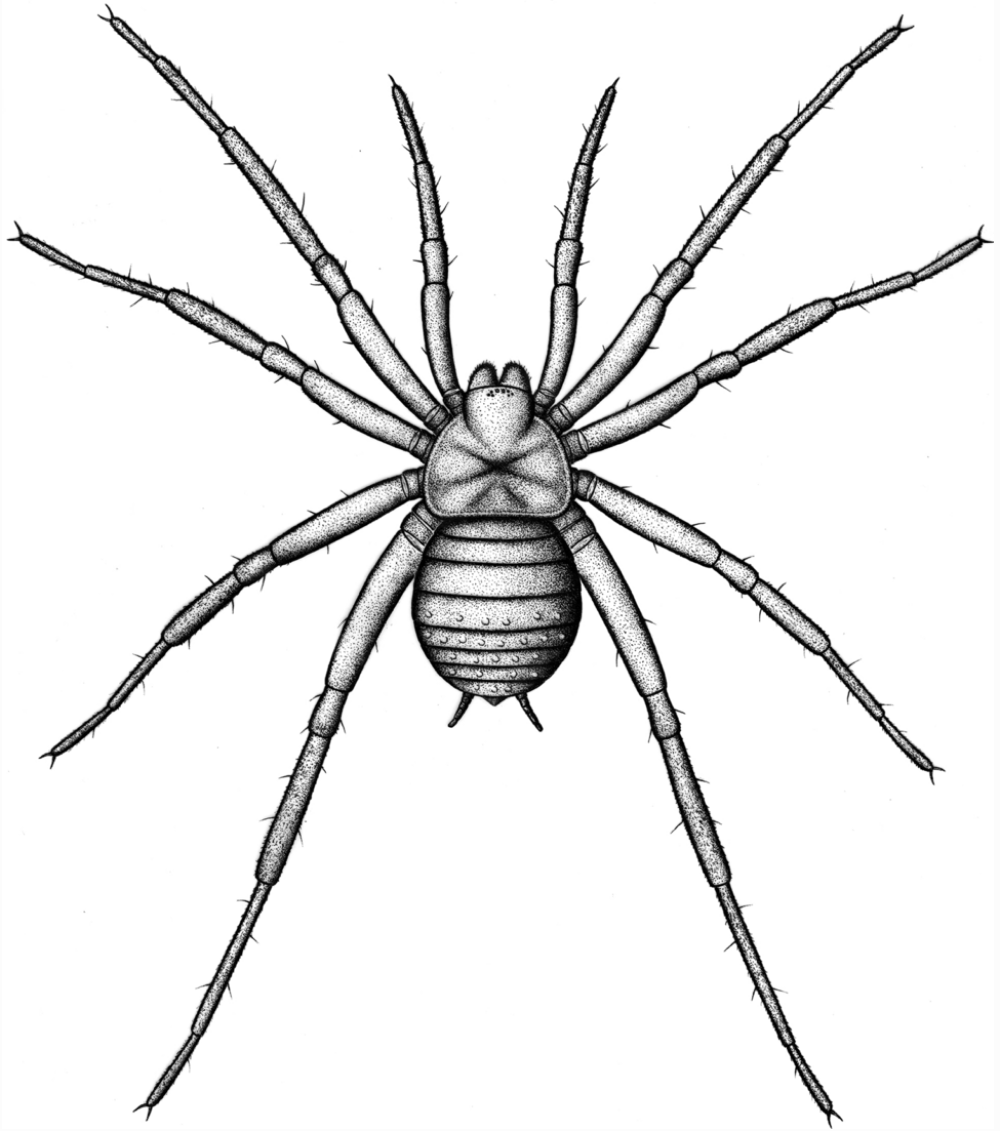An unidentified arachnid fossil was retrieved from the Late Carboniferous (Moscovian) strata of strata of Piesberg near Osnabrück in Lower Saxony, Germany, a few years ago. The mysterious specimen was passed on to fossil arachnid expert Dr Jason Dunlop of the Museum für Naturkunde in Berlin, who in a recent study has revealed its astonishing identity.
The fossil comes from a strata that dates back 310 to 315 million years and marks the first Palaeozoic spider ever found in Germany. It’s also a new species and has been named Arthrolycosa wolterbeeki after its discoverer, Dr Tim Wolterbeek, who is a geosciences researcher at Universiteit Utrecht.
As the first known “true spider” from the Palaeozoic of Germany, A. wolterbeeki is from the order Araneae, which separates it from earlier spider-like arachnid groups like the bottom-heavy Trigonotarbids. If its legginess isn’t enough to convince you, the fossil also shows preserved spinnerets, which are a defining characteristic of true spiders.
Despite its incredible age, the fossil spider is near-perfect as an almost complete specimen. It’s survived in the fossil record to become one of just 12 Carboniferous species which can be confidently assigned to Araneae.
If their mesothele-like body is indicative of lifestyle, A. wolterbeeki may have spent its day hiding away in a burrow, drastically reducing its chances of winding up in the fossil record.
While we might now have a full dozen, the diversity of Carboniferous spider species is pretty low compared to that of closely-related arachnids like Phalangiotarbids and the earlier-mentioned Trigonotarbids, of which there are twice and four times as many, respectively.
One clue as to why this might be relates to A. wolterbeeki’s similarities to the extant mesothele spiders. If they were ecologically similar and shared the same burrow-dwelling lifestyle, this may have limited their opportunities for fossilization as they would rarely have come into contact with the bodies of water needed to preserve them.
The females would be especially unlikely to make it into the fossil record as we know from living spiders that they are largely sedentary. On the other hand, once males reach maturity they venture out in search of a mate, and yet from what we’ve found so far it seems like their chances of being preserved aren’t any better.
“In this context, it is interesting to consider why neither the present specimen, nor any of the other Carboniferous spiders, preserve a male palpal organ,” explained Dunlop, “as we might expect wandering males to be preferentially preserved.”
In any case, the Piesberg-fossil now becomes an important holotype of the Araneae, and is a lovely reminder that a scientist’s academic reach isn’t limited to their chosen discipline.
“It has been almost four years since I found an unidentified arachnid fossil in the Westphalian D (Late Carboniferous) of the Piesberg quarry near Osnabrück, Germany,” said Wolterbeek in an online forum. “This has been a great experience, as I learned a great deal about arachnids and spiders and spinnerets along the way.”
The study is published in the journal PalZ.
Source Link: 310-Million-Year-Old Fossil Spider Is The Oldest Ever Found In Germany
